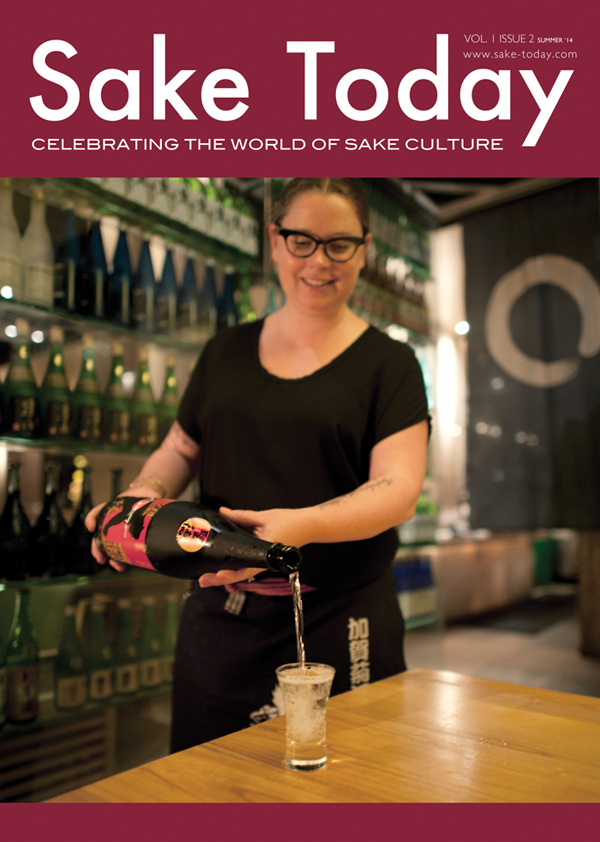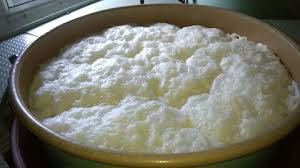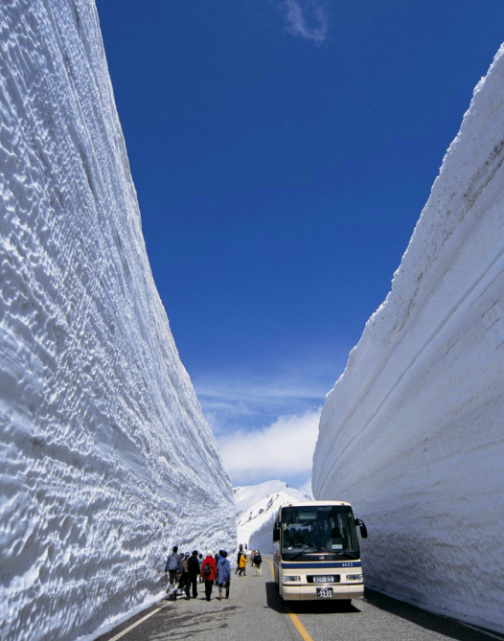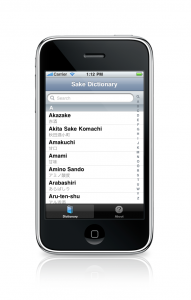|
|
|
Early-Autumnal Greetings to all readers,
Fall is here. Almost...
And sake is about to explode. Not literally, of course. But the amount of media attention - and its quality - is really growing. People and places that would not even take sake seriously before are realizing the breadth, depth and validity of what
we have all known and loved for so long.
While the sake-producing industry is not really set up to grow massively over a short time - at least not in terms of its infrastructure - it can use all the help it can get around the world - and especially domestically.
Let us all watch carefully and see what opportunities present themselves to help sake's popularity overseas translate to more stability and security in its domestic market. That will surely help ensure we enjoy our sake outside of Japan for years to come.
And enjoy the bounty of autumn. It is doubtlessly the best time of the year for drinking great sake.
John
Sake Confidential - Now available
Sake Confidential is a beyond-the-basics guide to the sake world, and after a short introductory chapter on all things sake, it goes into depth on many topics not usually touched upon. It is a practical and concise yet complete guide to sake idiosyncrasies, misperceptions, and controversies presented in a conversational and informal tone. Easy to read and frank, it also includes sake recommendations tied into each of the topics presented.
Read a veritable cornucopia of reviews here and order from your favorite bookseller there as well. Enjoy it!
~~~~~~~~~~~~~~~~~~~~~~~~~~~~~~~~~~~~~~~~~~~~~~~~~~~~~~
Sake Confidential - Now Shipping!
 |
|
Issue #2 of Sake Today is now being shipped! If you have subscribed, you will be receiving yours in the mail soon. If you have not yet subscribed, now is th time to do that. You can do that here now.
Like the first issue, Issue #2 is chock-full of sake information on many levels with something for everyone interested in sake. Learn more about this issue’s content at http://www.sake-today.com/orders/. Here you can order issue #1, issue #2, or both - and subscribe.
The digital version for your e-reader will be ready for download too, and you can view some content online as well. So check out sake-today.com now - and keep current on all things sake.
|
|
Yields from Fields
How much sake from a parcel of land?
Have you ever looked over a golden brocade of ready-for-harvest rice andand wonder how many bottles of sake could be made from it? Maybe not. Regardless, it is not an easy question to answer, because there are so many variables involved.
The first of these variables is the typical yields a given strain of rice will provide versus another. Some varieties might yield only 450 kiligrams of rice per hundred-square meters, whereas another might yields as much as 600 kg or more. That alone is a 33 percent difference.
Next consider milling. If a sake is made with rice milled down to only 88 percent, i.e. discarding but 22 percent of the rice, it has a big-ass head start on yields over a sake made with rice milled down to 35 percent, wherein 65 percent of the raw material is cast aside.
Then there are the steps of the brewing process. For example, how far is fermentation allowed to proceed? Fermenting until every last starch molecule has been converted to sugar, and that subsequently to alcohol, will lead to much more sake for a given amount of rice than stopping fermentation earlier. Furthermore, we need to ask how hard was the fermenting mash compressed to squeeze out the resulting sake after fermentation.
Fermenting further and pressing it harder will lead to more sake! But fermenting to the bitter end and then squeezing out every last drop of yield takes a huge toll on quality. Also, whether or not alcohol is added - and if added, how much - has a huge affect well. Yields for cheap sake in which copious amounts of alcohol are added can be double what they are for premium sake.
With all this compounding error, it is very difficult to say how much sake can be brewed from, say, a ton of rice. Still, it’s an interesting question. So let’s see . . .
To do this, we have to set up a few boundary conditions. Let’s say the size of the batch is one metric ton of rice, and that we are brewing junmaishu, so no alcohol has been added. Let’s also say that the seimai-buai is 60 percent, so that the outer 40 percent of the rice has been ground away.
Finally, let’s assume (huge jump in the analytic process here) that the moromi (the fermenting mash, one ton of rice) was allowed to ferment to the extent that, when the sake was separated from the leftover rice solids, there were 2200 bottles of sake. (A number supplied by a brewer as typical.)
Now, on to the land. Rice is sold by farmers in 60-kg units called hyo. A basic unit of farming land is 10 meters by 100 meters, and is known as a tan.
Since every rice strain is different, and since things vary from place to place due to weather conditions, we are starting to compound errors again. But for much good sake rice, like Yamada Nishiki, one tan yields eight hyo of rice. (Got that?) In other words, you can get about 480 kg of Yamada Nishiki from a plot of land ten meters by one hundred meters.
But wait! Keep in mind that this is brown rice, and we are using rice milled to 60 percent. So, to get one ton of our polished rice, we need to start with 1.66 tons of brown rice.
Firing up the calculator again, we see that we need about 3.5 tan to yield the 1.66 tons of brown rice. So, in the end, an area of 35 x 100 meters (about the size of a football field) will yield about 2,200 wine-bottle-size bottles of sake. But note that this is genshu, i.e. undiluted. So adding a bit of water to lower the alcohol content from 18 or 19 down to 15 or 16 will bring it to about 2500 bottles of sake, 720 ml each, from our one ton of polished rice that came from a field the size of a football field. About.
Please allow me to reiterate that the assumed degrees of accuracy throughout these calculations is appalling from an engineering standpoint. But still, it’s kind of neat to be able to glance out over a golden field of rice, and think, “Now let’s see . . .”
* * * * * * * * *
For those that are interested, rice fields in Japan are measured in traditionalunits of area with unique names. And they are very close to metric measurements. Interestingly, this ties in to room measurement sizes, which in turn ties into tatami mat sizes.
Two tatami mats together measure 3.3058 square meters. This unit is one tsubo. Three hundred tsubo is (300 x 3.3058) about 1000 square meters, which is also equal to one tan (10m x 100m). Ten tan, or a 100 x 100-meter plot, make up one cho. One cho is very close to one hectare. LIke, within one percent. Now you know.
|
|
Obsolete Sake Classification System
Ye Olde Kyubetsu Seido
These days, we know how to pick our sake. There are classes or grades of sake that are legally defined that exist to help us. And we know these well: Daiginjo and junmai daiginjo, ginjo and junmai ginjo, tokubetsu honjozo and tokubetsu junmai below these, then honjozo and junmai-shu, and futsuu-shu below that. They are all legally defined, even if those definitions can be vague in areas. And while these grades are legal definitions, when it comes to indications of quality, "they're more like guidelines" as they say in "Pirates of the Caribbean."
In other words, while daiginjo is technically a top-grade sake, you might prefer junmai or honjozo sake in general. And no one -
no one - can always identify the grade of a sake on taste and aroma alone. Often? Yes. Always? No. There is too much overlap between the grades.
But still they serve a great purpose and fill a need - making selection easier for the consumer. But while these grades have been around as law since about '91, and as industry self-regulated agreements since the 80's or so, there was a system of grading sake that was in place before the current one.
It is now defunct, and has been since about '90. It served its purpose but became outdated and even irrelevant. But it is part of the history and culture of sake, and has not yet been totally eradicated from some folks' minds.
That system was known as the "Kyubetsu Seido," which simply means "Classification System" and was in existence from 1943 to 1989, from which time it was phased out in favor of the current system. The Kyubetsu Seido was wonderfully simple: all sake was graded as Tokkyu or Special Class (the top), Ikkyu or First Class, or Nikyu or Second Class, which was the default for sake that did not make the cut for First or Special Class.
Note, the seimai buai (degree of rice milling) and whether or not it was junmai or added-alcohol, were irrelevant. With only three terms to know, no vagueness or hidden meanings involved, and with a good degree of reliabilily, what was the problem with the system? What as the catch? In short: price and excessive homogeneity.
The way it worked was that brewers that wanted their sake officially ranked as First or Special Class would submit samples to the government. They would taste it and asses that yes, it was good enough for that rank, or no it was not. Those that passed the blind tasting assessment of a team of well-trained government sake tasters (great work if you can get it) were permitted to put Ikkyu (First Class) or Tokkyu (Special Class) on the label. And, of course, the tax on such ranked products was higher.
So it cost consumers more, but it did assure a certain level of quality. Consmers did not need to worry about brands so much, or grades, or milling rates or added alcohol or nihonshu-do or anything else: just buy Ikkyu or Tokyu and one would be assured of at least a certain degree of quality.
It was very useful in its time, since there were 5000 sakagura back then, and it helped consumers wade through all that. And of course, it helped the government too, since it led to more tax revenue from sake. And those that sought but a buzz need only seek Nikyu-shu (the default Second Class products) to ensure price performance. To a degree, it was win-win.
But it began to unravel and wane in relevance and usefulness as smaller brewers began to come out with better and better sake, both in reputation and in sheer enjoyability. Not able to compete with the larger companies in national distribution, they kept things local. And as such, there was no reason to make their loyal customer base pay the extra tax for a Ikkyu or Tokkyu stamp on the label.
The loyal locals knew what was good, so the smaller brewers would not even bother with submitting sake for certification, and simply sell their fine brews as Second Class sake, saving their fans that extra cost. This tendency gathered momentum that lead to critical mass, and was a big factor in the elimination of the system.
Certainly there were more reasons. The fact that the curently-used system developed and came into use, albeit with no legal base but a strong de facto significance, had much to do with the change as well. There were also reasons that were related to how imports of other premium alcoholic beverages were taxed, somewhat unfairly due to the former system, and some say Japan was pressured externally as well.
Another problem was that since the judges were all looking for the same thing - a lack of flaws - that many brewers sacrificed some character and uniqueness that could conceivably be perceived as idiosyncrasies for which the sake could be faulted. As such what came to be known as premium sake was less character-laden and more homegeneously predictable.
For a combination of the above reasons, the Kyubetsu Seido was eliminated in 1989, being phased out so brewers could use up their stocks of Ikkyu and Tokkyu sake, and was subsequently replaced by the current system, replete with its own shortcomings.
While it may seem we just exchanged one imperfect system for another, that is likely best in the end, since we all need to make our own decisiosn anyway. If they were made for us, the fun would be taken out of sake, now wouldn't it? ;-)
|
|
 Announcements and Events Announcements and Events
Sake Professional Course in the US
San Francisco, California
December 8 to 10, 2014
The next Sake Professional Course will be held December 8 to 10, 2014, at the Bentley Reserve in downtown San Francisco. You can learn more here about the course, with more content about content and cost here. And check out some testimonials too. Those interested can contact me by email for details and/or with any questions.
The Sake Professional Course will of course include certification testing for the Sake Education Council-backed Certified Sake Professional exam.
~~~~~~~~~~~~~~~~~~~~
Sake Professional Course in Japan
January 26 to 30, 2015
 |
|
This is it:
the most comprehensive sake course in existence. Three days of lectures covering the same content as the US-based courses, with tastings of upward of 100 sake, with evening meals accompanied by Japan’s best stuff, followed by two full days of sake brewery visits. “No Sake Stone Remains Left Unturned” in this full-sake immersion program. Email me at sakeguy@gol.cm for more information and details
~~~~~~~~~~~~~~~~~~~~
Sake Professional Course Level II
with Advanced Sake Professional Certification Testing
Level II, the ASP course, is open to those that have successfully
completed the Level I CSP course. If you are one of those, and are interested in the Level II course, it runs from February 16 to 20, 2015. The content of Level II is more about developing your sake tasting skills. For more information, feel free to email me.
~~~~~~~~~~~~~~~~~~~~
Sake Brewery Tours 2015
For Sake Brewery Tours 2015, we have announced two new destinations: Kyushu and Tohoku in Feb 2015. The Kyushu tour is already sold out! However, there are a few spots open for the Tohoku tour (February 23 - 27, 2015). So, don't miss this opportunity to visit Tohoku, and to learn about sake via hands-on sake experiences when visiting kura, augmented by an introductory lecture from John Gauntner.
In addition, this is the last year for the special subsidy by the Japan Sake and Shochu Makers Association. So, don’t miss it!
Tohoku, February 23 - 27, 2015 (Monday-Friday)
saketours.com
 |
|
This is going to be a sake fan’s dream tour with visits to four sake breweries across the Tohoku region, bridging the contrast between the snowy mountains of Yamagata and Miyagi’s Matsushima Bay. Sake and onsen hot springs are the theme for this tour. Start exploring Yamagata with a sake and Yonezawa beef pairing at your welcome dinner. In addition to visiting eminent breweries, highlights in Yamagata include helping to brew sake at Dewazakura, making soba, trekking up the mountain to see the Snow Monsters, then, soaking in onsen in Zao. On the last two days, experience the coastal side of Miyagi in Matsushima, which has made a tremendous recovery from the disaster of March 11. Enjoy feasting during our visit to a working fish market, munching steamy hot oysters at a pop-up shack, and simply relaxing in beautiful onsen hot springs by the serene bay.
Sake Breweries we will visit on this tour: Toko, Yonetsuru, Dewazakura(2008 IWC Champion Sake), Urakasumi
Learn more at saketours.com
Sake Education Council Website
|
 |
|
|
Please take a moment to check out the website for the Sake Education Council, the organization behind the Certified Sake Professional and Advanced Sake Professional certifications. We plan to grow steadily, strongly and continually, and we will need the support of all those that love sake to do so. Follow us through the "usual suspects" of social media.
Don't forget the archives!
Older editions of this newsletter are archived here.
Really old editions are archived here.
|
 Sake Education Central Sake Education Central
Sake's Hidden Stories and The Sake Notebook are now available for the Kindle, Nook and iBooks!
The Sake Notebook is now available for the Kindle as well as the Nook. And now, it is available for iBooks on iTunes as well!
Sake's Hidden Stories too is now availabe on the Kindle as well as the Nook. And now, it is available for iBooks on iTunes as well!
Both are
less expensive than their original pdf version too. Now is your chance to learn more about sake from your phone or tablet! Check 'em out!
Sake Dictionary App for the iPhone, iPod and iPad
"For 99 cents, this app ROCKS!!"
-a satisfied customer
There you are, perusing a menu, or standing in front of a shelf of great sake, or perhaps reading a sake newsletter… and up pops one of those hairy, pesky sake terms in Japanese. You know you have heard it many times, but dammit, you just cannot remember what it means now…
No problem! Just whip out your iPhone or iPod and fire up your trusty old version of
The Sake Dictionary. In a matter of seconds, you’ll be amongst the cognoscenti once again. But… if only you could pronounce it properly. Now that would really rock!
Done! Just tap on the term and you will hear a clear example of how to pronounce the term in Japanese. Repeat it a couple of times and the term is yours for eternity, to toss about and impress your mates.
What’s more, it’s
less!
Less than what it cost before, much less. Like less than one-seventh less. For a limited time only, the audio-enhanced version of The Sake Dictionary iPhone app is available for a mere $0.99.
|
 |
|
|
The Sake Dictionary is a concise little package of all the terms you might ever come across when dealing with sake. Almost 200 of them - including sake grades, rice variety names, seasonal sake terms, special varieties, rare types, post-brewing processing words and the myriad terms used in sake production - many of which are not even familiar to the average Japanese person on the street - are listed up here with concise, useful and clear definitions and the written Japanese version as well. And now, with the new audio component, you can listen and learn just how to pronounce those terms properly.
Start to toss around Japanese sake terms like you were raised knowing them! Gain a level of familiarity hitherto unimaginable! Avoid frustrating paralysis when faced with a sake-related purchase!
Get your copy of The Sake Dictionary now and never be confused by sake terms - or how to pronounce them - again.
Get it here: http://itunes.com/apps/sakedictionary
(Note if you have already purchased it, this upgrade to the audio version is free. Just go to iTunes and get it!)
|
Are you not getting this newsletter? I realize that is like asking that
"those not present please raise your hand," but for future reference, should you spontaneously stop receiving this newsletter, please go here and sign up again. Should that not work, please go to www.sake-world.com.
Email newsletter services are very careful not to be considered spam enablers, but the problem is that often very valid email addresses come back bounced as invalid. It is an unavoidable problem. So if you or someone you know is not getting this, or stop(s) receiving it inexplicably, please do take a moment to double check that you are still subscribed.
Sincere apologies for the hassle, mixed with gratitude for reading this newsletter. |
I hope you have found the above information helpful and entertaining. For more information about all things sake, please check out www.sake-world.com. Until next month, warm regards, and enjoy your sake.
Questions and comments should be directed to John Gauntner, at this
email address.
All material Copyright, John Gauntner & Sake World Inc.
Regards,
John Gauntner
Sake World, Inc
 . . 
|
|
